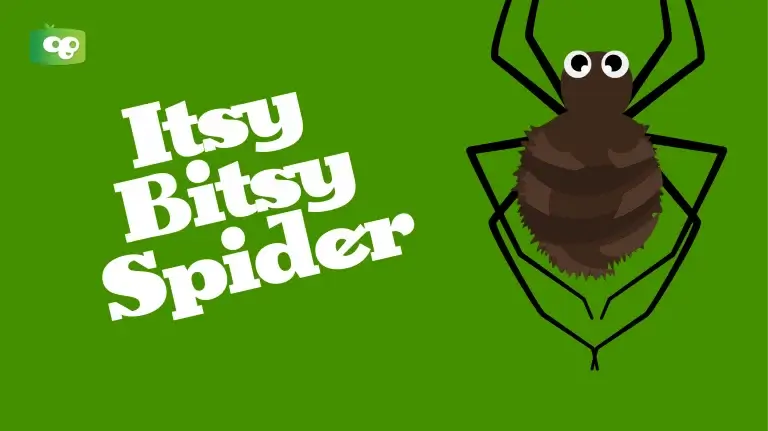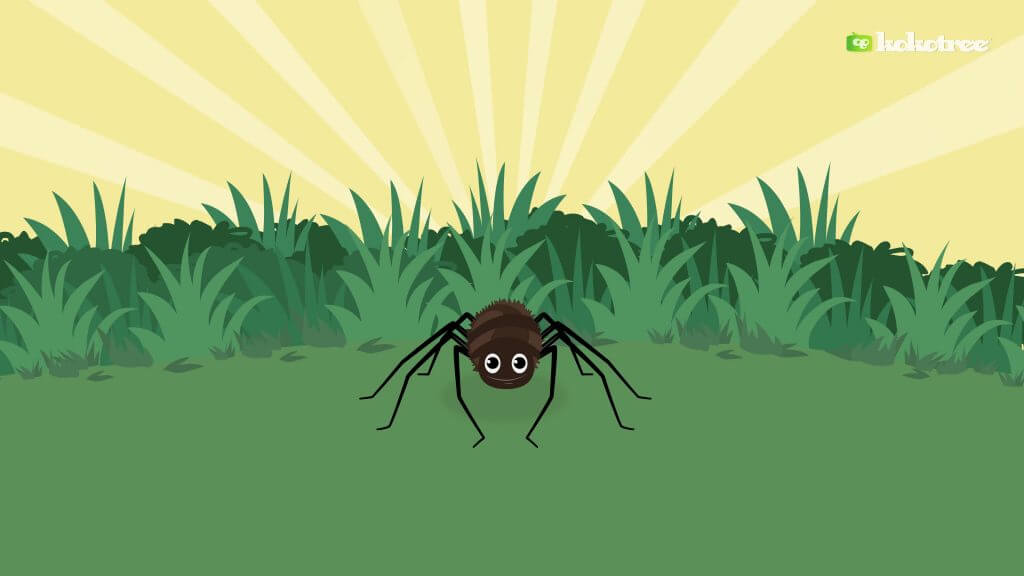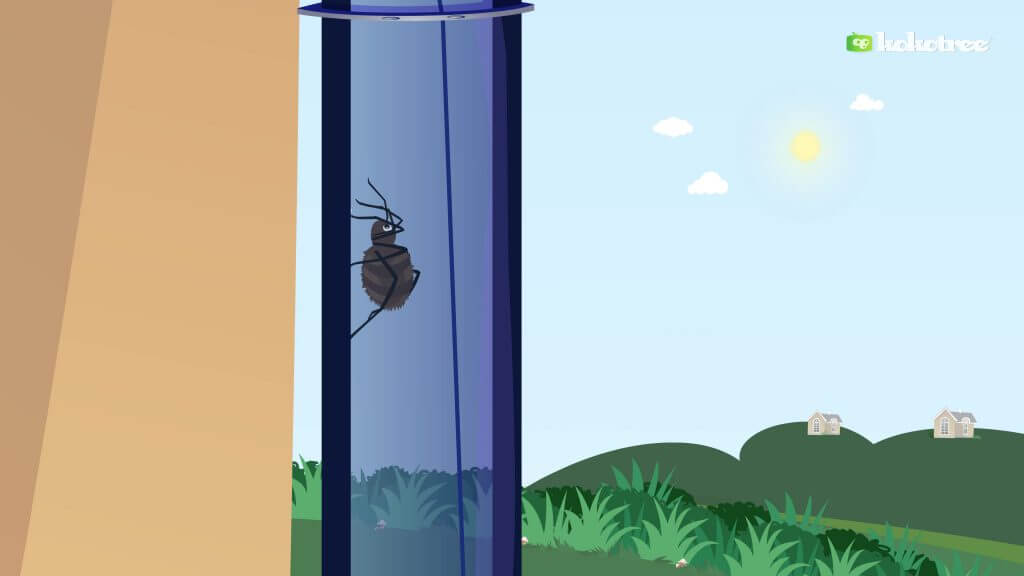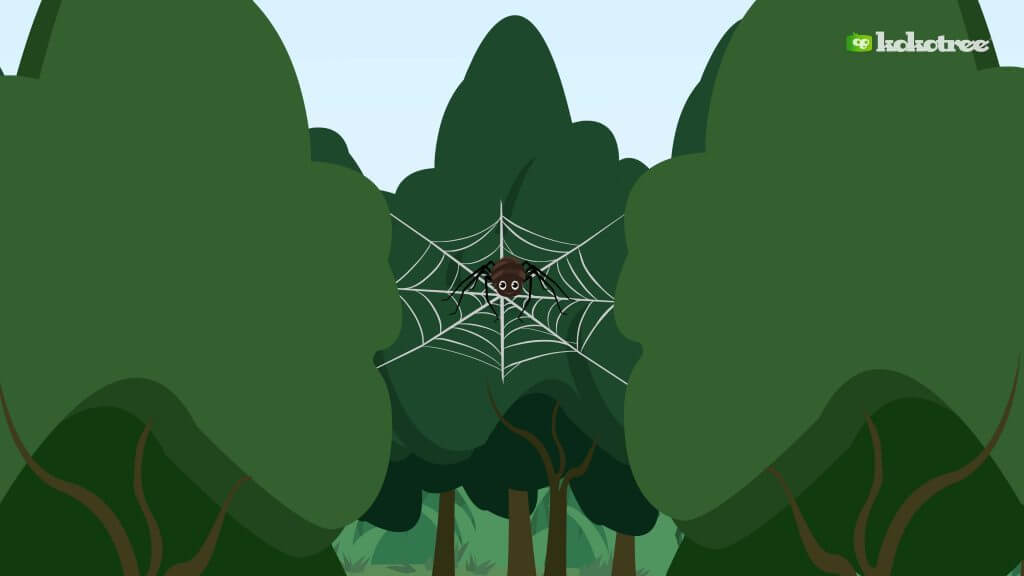

This classic children’s song has stood the test of time and is popular with parents and educators. If you’re looking for an educational way to entertain your preschooler, look no further than Itsy Bitsy Spider.
This video is part of Kokotree’s video collection, which is one of the best educational app for kids to learn core early learning concepts. Here are some educational benefits your child can get from watching the Itsy Bitsy Spider video.
The song is about a spider that climbs up a water spout only to be washed away by the rain. Despite being passed away—repeatedly—the spider manages to make it back to the top of the spout.
The song is simple, but it teaches children an important lesson about perseverance. No matter how often you get knocked down, you can always get back up and try again. This valuable lesson can be applied to many aspects of life.
Itsy Bitsy Spider is also a great way to introduce children to rhyming. The song contains a lot of simple rhymes, which can help children to understand the idea of how words can rhyme. This can be a helpful tool for children just learning to read.
Overall, Itsy Bitsy Spider is an excellent song for children. It is both educational and entertaining and a great way to teach children about perseverance and rhyming. Itsy Bitsy Spider is worth considering if you are looking for a fun, educational song for your child.
The Itsy Bitsy Spider has been climbing up the water spout and into our hearts for generations. This classic nursery rhyme is a favorite for many, teaching perseverance and resilience in a fun and catchy way. And now, with the wonders of technology, you can enjoy this tale in a whole new format. Dive in to watch the Itsy Bitty Spider video come alive in the vibrant rendition below!

The Itsy Bitsy Spider video is best for kids aged 1-5. This is because the video teaches basic concepts like colors, numbers, and shapes in a fun and engaging way. The video’s simple plotline is also straightforward for young kids to follow.
The catchy song in the video will stick in your child’s brain long after they’ve watched it. As your child watches the Itsy Bitsy Spider video, they will learn valuable lessons about persistence, teamwork, and perseverance.
These essential life skills will help your child succeed in school and their future career. Additionally, watching Itsy Bitsy Spider preschool song will help your child develop a love for music and singing.

There are many ways to use Itsy Bitsy Spider to teach your child. One way is to sing the song together and then talk about the spider’s experience.
Ask your child questions like, “What do you think the spider was feeling when it got washed away by the rain?” or “Why do you think the spider kept trying to climb the water spout?”
This will help your child to understand the concepts of emotions and perseverance. Also, you’ll be able to use the video to teach your child about rhymes. Could you ask your child to listen to the rhyming words in the song and then point them out?
You can also have your child sing along with the video to practice their rhyming skills. Finally, you can use the video to teach your child about colors, numbers, and shapes.
As you watch the video together, point out the different colors of the spider’s body and the water spout. Count the number of times the spider gets washed away by the rain. And identify the shapes of the spider’s body and the water droplets.
The song Itsy Bitsy Spider has been around for quite some time and has many versions. It was initially published in 1910 under the classic “Spider Song.” This version was referred to as “blooming, bloody” instead of “itsy bitsy.”
The song was later published in its modern form in 1948 by the California Folklore Society. Mike and Peggy Seeger’s American Folk Songs for Children were also published in 1948 and contains a version of the song.
It is clear that the song has been popular for many years and shows no signs of slowing down. Itsy Bitsy Spider is an excellent example of how children’s songs can be entertaining and educational. The song teaches children about spiders and their habits, giving them a catchy tune to sing along to. It is no wonder that music has been so popular for so many years.
Children and adults enjoy singing along to Itsy Bitsy Spider, which will continue to be a popular song for many years.
The itsy bitsy spider crawled up the water spout.
Down came the rain and washed the spider out.
Out came the sun, and dried up all the rain,
and the itsy bitsy spider went up the spout again.

The Itsy Bitsy Spider, known to many around the globe, boasts a rich tapestry of history and variations that speak to its universal appeal and enduring charm. This seemingly simple children’s rhyme, in fact, traverses cultures, decades, and even centuries, adapting and evolving in intriguing ways.
It’s speculated that the Itsy Bitsy Spider could trace its roots back to older European songs. However, the first definitive record of this song appeared in print in the early 20th century. Specifically, the initial version titled the “Spider Song” surfaced in 1910. Yet, it’s fascinating to note that despite its age, its core narrative has largely remained consistent – a tale of a spider’s indefatigable spirit in the face of recurring obstacles.
Depending on where you are, the spider might not always be ‘itsy bitsy’. For instance, in the UK, children sing about the ‘Incy Wincy Spider’. There’s also the ‘Eency Weency Spider’ version that pops up in some parts of the US. The terms ‘teeny weeny’ and ‘itty bitty’ have also been used interchangeably in various renditions of this beloved rhyme, reflecting regional linguistic nuances.
As with many nursery rhymes that span continents, the Itsy Bitsy Spider has been adapted to reflect different cultures and languages. In France, for instance, it morphs into “L’araignée Gypsie”, while in Germany, kids might sing about “Die kleine Spinne spinnt und schweigt”. Each version, while unique in lyrics and sometimes even in narrative direction, retains the core message of perseverance.
Over the decades, the melody accompanying the Itsy Bitsy Spider has also seen variations. Different artists and educators have put their own spin on it, adding unique instrumentals or modifying the tempo to cater to diverse audiences or educational contexts. These musical evolutions, while staying true to the rhyme’s essence, enhance its appeal and ensure its relevance across generations.
Engaging children with repetitive and rhythmic content like nursery rhymes might seem like a simple amusement, but beneath this playful exterior lies a profound cognitive treasure trove. From boosting memory to enhancing auditory skills, nursery rhymes are an instrumental tool in early cognitive development.
One of the primary benefits of repetitive songs is their ability to strengthen a child’s memory and recall capabilities. Every time a child hears the familiar cadence of a rhyme like “Itsy Bitsy Spider”, neural pathways associated with memory are activated and reinforced. The repetition ingrains the lyrics, aiding in the retention and recall of information.
Nursery rhymes often come with varied pitch, tone, and rhythm. Listening to these changes helps children fine-tune their auditory skills. They begin to discern subtle differences in sounds, an essential precursor to developing phonetic awareness and, ultimately, reading skills.
When children sing or even merely listen to songs, multiple areas of their brain are activated simultaneously. The left hemisphere, typically associated with logical processes, works on decoding words and structure. Simultaneously, the right hemisphere, associated with creativity and intuition, engages with the melody and rhythm. This bilateral brain activity fosters stronger neural connectivity and holistic cognitive development.
The rhythmic nature of nursery rhymes introduces children to the phonological characteristics of a language. This immersion into language rhythm, intonation, and structure aids in vocabulary acquisition and linguistic understanding.
Repetitive rhymes allow children to predict what comes next, be it in terms of lyrics or rhythm. This predictive ability is crucial in honing problem-solving skills and understanding patterns – foundational elements in mathematics and logical reasoning.
Finally, engaging with nursery rhymes isn’t just a cognitive exercise. When children sing together, it fosters a sense of community and shared experience. They also connect with the emotions conveyed in the rhymes, be it the triumph of the spider climbing up the spout again or the disappointment when it’s washed out, which aids in emotional intelligence development.
The world of nursery rhymes is vast and varied, each with its unique flavor, cultural backdrop, and educational essence. Among these, “Itsy Bitsy Spider” stands tall. Here’s a comparative analysis of this timeless classic with its contemporaries in terms of popularity, themes, and educational value.
“Itsy Bitsy Spider” is undoubtedly one of the most recognized nursery rhymes globally. Its simple tune and memorable lyrics have made it a favorite across generations. Compared to other classics like “Twinkle, Twinkle, Little Star” or “Humpty Dumpty”, “Itsy Bitsy Spider” enjoys similar levels of recognition and engagement. Its sing-along nature, complete with actions, ensures it remains a beloved staple in preschools and households alike.
Nursery rhymes often delve into various themes, from starry wonders to tales of mishaps. While rhymes like “Ring a Ring o’ Roses” hint at historical events (though this connection is often debated), and “Baa, Baa, Black Sheep” touches upon trade and commerce, “Itsy Bitsy Spider” focuses on resilience and perseverance. The narrative of the spider persistently climbing the water spout, despite the odds, imbues children with the idea of tenacity and the importance of trying again.
While most nursery rhymes offer a mix of entertainment and learning, the educational value can vary. “Five Little Monkeys” is fantastic for teaching subtraction and numbers, and “Old MacDonald Had a Farm” introduces children to various animals and their sounds. In comparison, “Itsy Bitsy Spider”, while straightforward, teaches kids about determination and the concepts of cause and effect (rain washing the spider out and the sun helping it climb again). Additionally, the hand motions associated with the rhyme enhance motor skills and coordination.

Could you talk to your child about how the spider didn’t give up? It kept trying to go up the waterspout, but the rain kept washing them out. In the end, the spider reached the top and was very happy.
Ask your child to think about a time when they didn’t give up and how they felt when they finally achieved what they wanted. This rhyme can be sung along with finger movements, which will help develop your child’s fine motor skills.
This will be an excellent benefit for activities such as writing and cutting.
The Itsy Bitsy Spider video has many educational benefits for toddlers. They will have fun doing the actions, singing along to the catchy tune, and developing essential skills like attention, language, prediction, and sequencing. So next time you are looking for a fun activity with your toddler, consider The Itsy Bitsy Spider!




